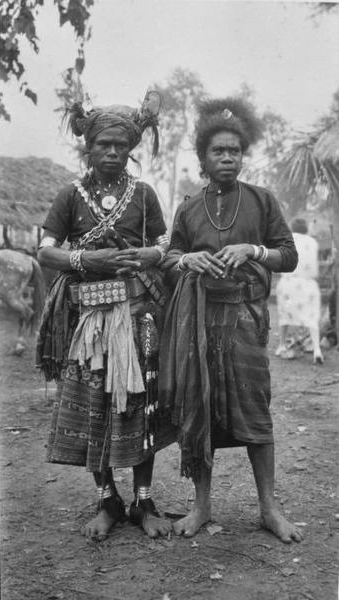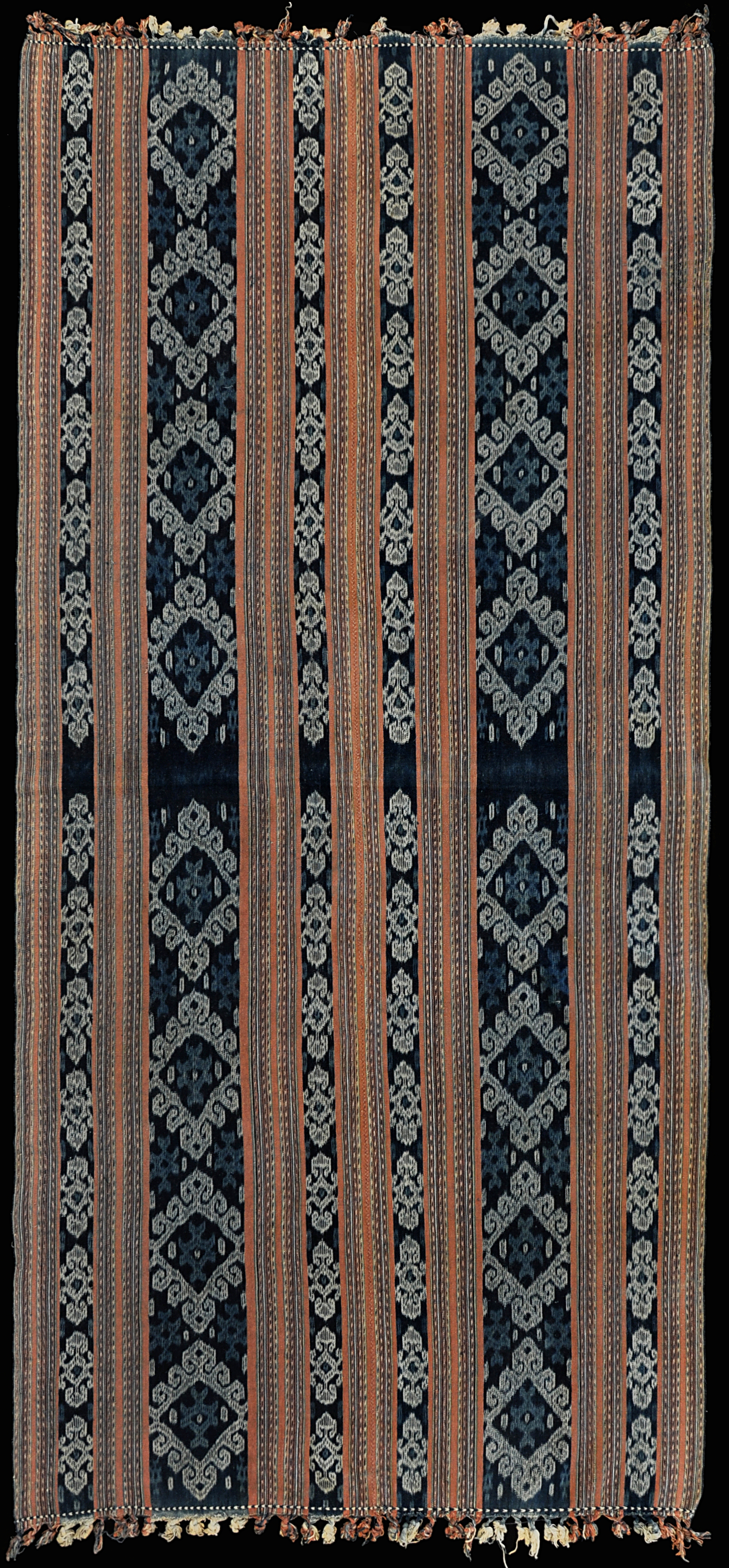| |
 mouse over to magnify mouse over to magnify
| | | | 189 Timor, East Timor
Beti naek (men's wrap)�
| | Locale: | Oecusse/Ambenu, the East-Timorese exclave in West-Timor. Unidentified village in the lower elevations, e.g. in Desa Cunha region. Atoni people. | | Period: | 1925-1945 | | Panels: | 2 | | Design: | Beti naik (man's blanket in Dawan) decorated with two wide and four narrow bands of indigo on white ikat, alternated with bands of stripes in indigo and morinda, and narrow stripes in yellow and green, both faded to a soft pastel tone. (Vegetable green dye used in the area in inherently unstable.) The main motif, called kaif, represents ancestral relationships. The motifs in the narrower ikated bands are crocodiles. Note that the tail and the head are commonly depicted in the same way. | | Size: | 90 x 196 cm (35.4 x 77.1 in) | | Weight: | 875 g (496 g/m2) | | Yarn: | Cotton, hand-spun, medium | | Comment: | All natural dyes. Clearly used for a long period, but well preserved. Textiles from Ambenu are rare due to the enclave's isolation. Loosely twisted fringes. This densely woven cloth weighs almost half a kilo per m2. Very good overall condition, with lovely patina. | | Background: | Additional information in chapters on Timor and East Timor. | | Published: | Ikat Textiles of the Indonesian Archipelago, 2018.
Timor: Totems and Tokens, 2019.
Ikat Textiles of Timor: Indonesian and Timor-Leste, 2025.Ikat Textiles of Timor: Indonesian and Timor-Leste, 2025. | | Compare: | 002 118 169 | | Sources: | Very similar to beti naik from Taiboko village in Yeager and Jacobson, Textiles of Western Timor, Plate 194, very to rather similar to Plates 192, 193 - except that ours is done purely in vegetable dyes; very similar to beti from Piotafo village in desa Cunha, Fig. 149. See also Chapter 8.4.2.2. Also similar to a beti warn by a dancer from Soë, Amanuban, photographed by Alfred Bühler in 1935, depicted in Hamilton c.s., Textiles of Timor, Fig. 2.1. Similar beti worn by Timorese man in formal attire on photo, below, from collection Tropenmuseum, 1938, supposedly shot on Flores ('possibly Nggela'), though no such cloth is made on the island, least of all in Nggela. (Note European woman fleeing the shot.)
 | | |
 ©Peter ten Hoopen, 2025
All rights reserved.
|
|


